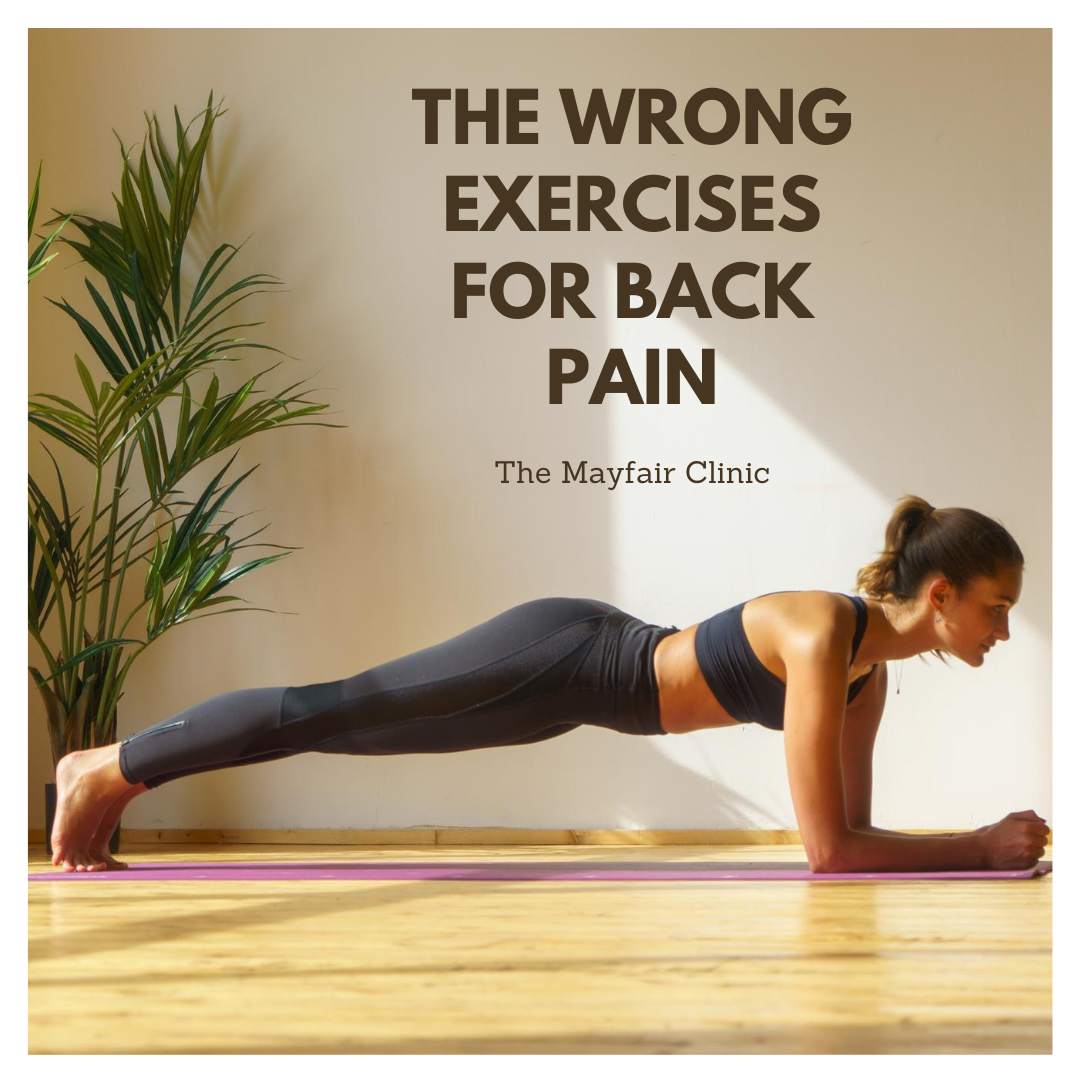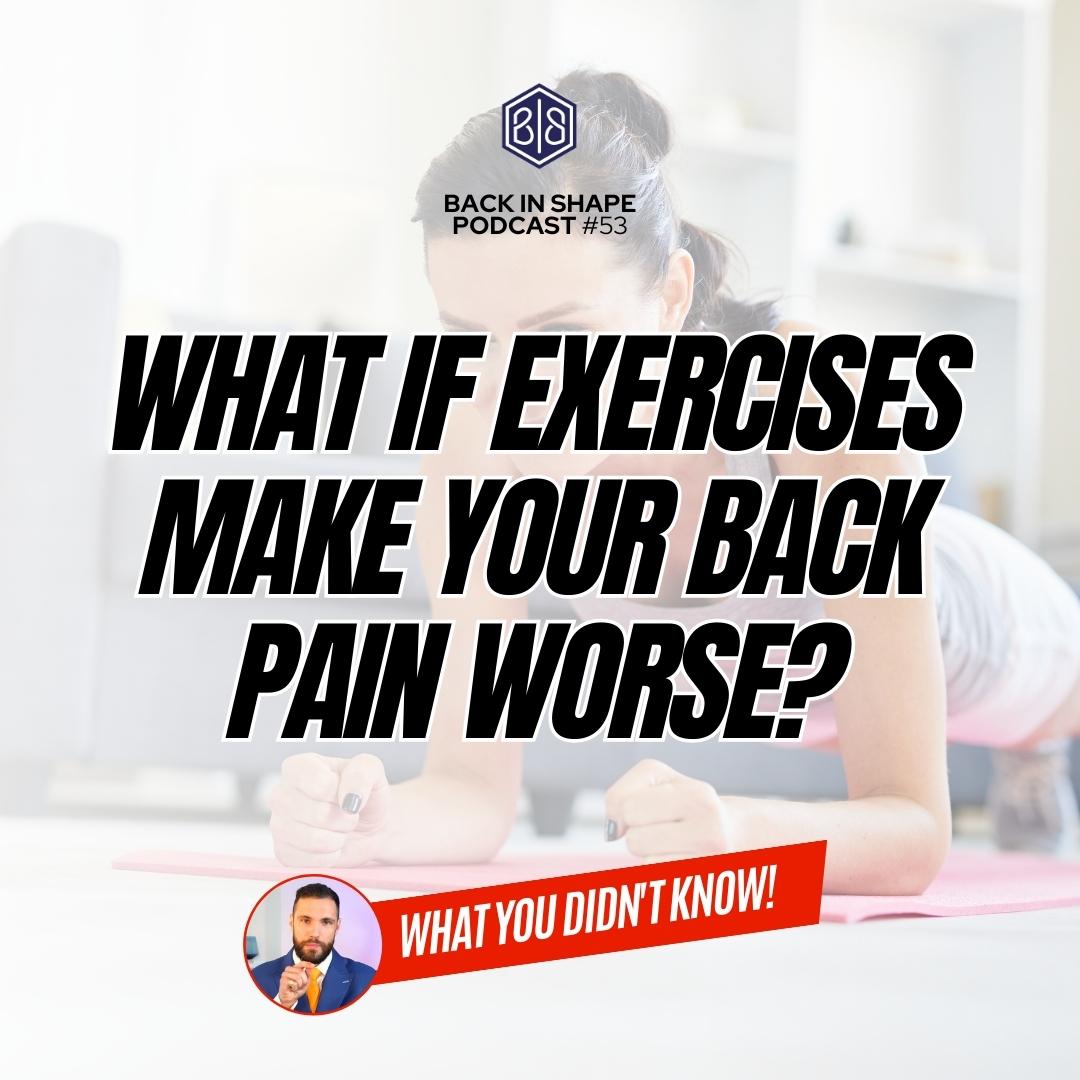If you’ve read any of our articles or watched any of our videos previously, we frequently talk about exercises you need to be avoiding if you have back pain. This is often because exercises that you can find online to help with back pain, or in classes at the gym, can cause your back problem to worsen if you’re not aware that you should be avoiding them. Today we’re going to talk through the exercises you should be avoiding and why, so you can understand how to better take care of your spine if you’re struggling with back pain.
Flexion Based Exercises For
Back Pain
One of the most common exercises that we hear time and time again having been prescribed to help with back pain is knee hugs or knee rocks. These are so frequently given if you choose to go down the NHS route of help for back pain, and because in theory they could offer you relief. However, the temporary relief in the movement is not helpful in the long run, which we’ll go on to explain why. At the back of your disc, there’s a space in which nerves travel through. When you have a back injury, inflammation fills this space and compress the nerves. When you perform a knee hug or knee rock, this puts the spine into a forward bend, known as flexion. In the depth of the movement, flexion allows opens out the space at the back of the disc, which allows a bit more space for that inflammation and can help with not feeling as compressed. However, while your spine is folded in that position, this places a lot of pressure on the front of the disc, which can cause it to shunt backwards. As your body is trying to knit its injury back together, this motion can cause the injury to open back out. So while it may feel good, you’re causing continuous scar tissue to build around the injury, which is not a healthy healing environment and doesn’t help in the long-term. Instead of opting for these exercises first thing in the morning, following the advice on our Back In Shape program of the towel exercise and icing protocol will give you the best start to the day. If your back is particularly troublesome first thing in the morning, doing a slight shimmy of the hips from side-to-side should help to loosen you up before getting out of bed, but make sure you’re not twisting and it’s just a side-to-side movement of the hips.
Stretching Your Piriformis & Hamstrings
In our Back In Shape program, we teach you in the free Phase 1 section how to effectively stretch to relieve the pressure on your back and allow your lower body to function better. The way in which people commonly stretch their hamstrings often involves a forward bending of the spine as you flop yourself over to touch the toes. We also see far too much emphasis put onto stretching the piriformis, as this is commonly diagnosed as the main issue when someone has lower back pain. However, the piriformis muscle is so small, its ability to cause you so much pain is, in our opinion, not an appropriate diagnosis and more attention should be paid to the structure of your lower back. Furthermore, the piriformis stretch involves a knee hug-like movement where you pull one of the knees to the chest while the other is folded in front. Instead, our version of a hamstring and glute stretch is far more appropriate for relieving pressure on the lower body. We also emphasise the importance of keeping your spine in a more neutral position during these stretches so as to not stress the area.

Join The Back In Shape Program
A full protocol to support you get out of back pain in the short term and then rehab safely and effectively to deal with the issue for the long term.
Abdominal Exercises At The Gym
If you’re a regular gym-goer with back pain, chances are you’ve come across advice online that doing core and back strengthening is the way to go for long-term relief. But some of the most popular exercises for training the abdominal muscles can be too aggravating for back pain sufferers. Russian twists, planks, sit-ups etc, these are all examples of exercises that put far too much pressure on the spine while training the core. Russian twists is one of the worst exercises you can do to train the core, as it involves two of the movements that are likely to injure your discs. First of all, the rounding of the spine is problematic as we’ve discussed previously as it puts all the pressure on the front of the disc, but then the twisting while holding a weight exacerbates this even further. Sit-ups again put your spine into flexion, while planks put too much pressure onto your back as you try and hold that position for a long period of time. Side-planks are one of the exercises that we recommend instead, and we teach you how to do this exercise properly as part of Phase 2 of our Back In Shape program.
We hope you found today’s article helpful! If you have any questions at all about the topic of exercises for back pain, please do feel free to get in touch as we’d be happy to help. You can reach out to us through our social channels, through email at info@themayfairclinic.com or by tuning in to our livestreams every weekday on our Facebook and YouTube channels! If you haven’t yet signed up to our Back In Shape program, you can do so completely free of charge by visiting the website at www.backinshapeapp.com. Phase 1 is free so you can try this out and learn from the selection of lessons, before upgrading to the full rehabilitation program if you wish!
Contact Us.
Email Us
info@themayfairclinic.com
Call Us
0203 947 32 22
Clinic Address
4 Cavendish Square, London, W1g 0PG.
